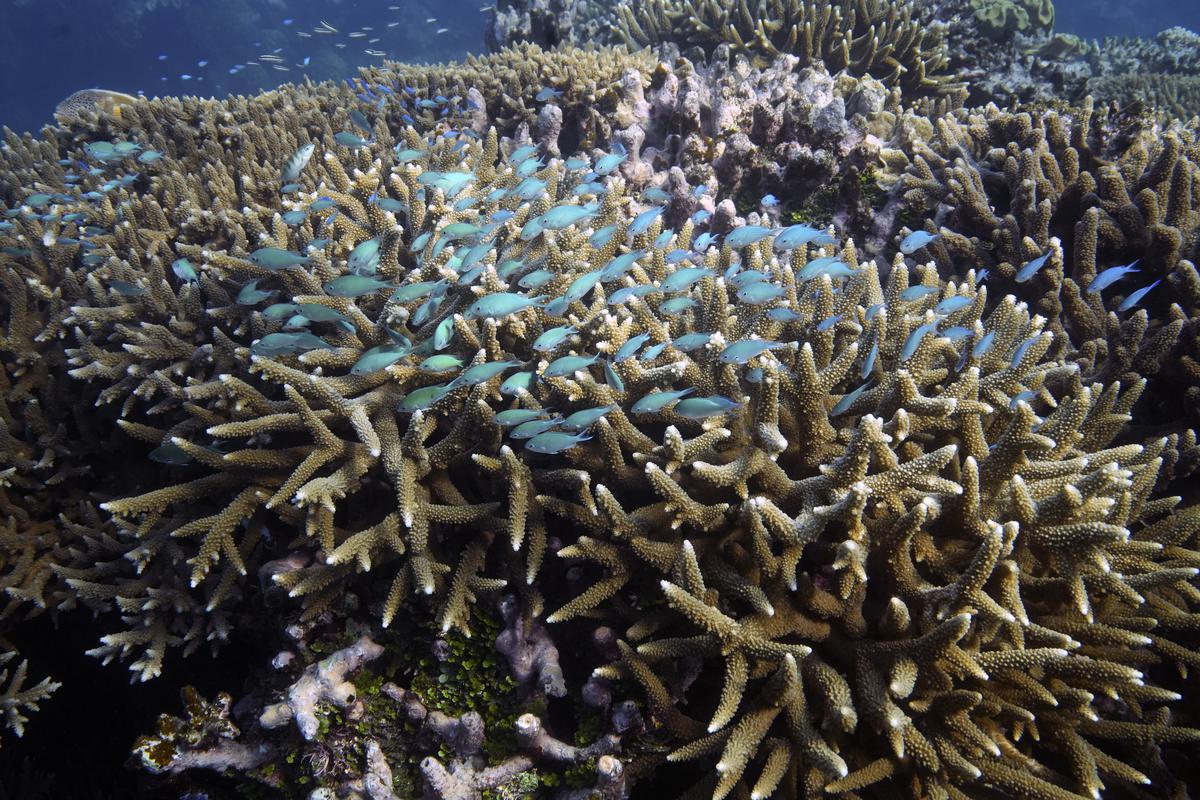Context
-
Scientists discover five new species of black corals living thousands of feet below the ocean surface near the Great Barrier Reef.
About Black Corals
- Black corals can be found growing both in shallow waters and down to depths of over 26,000 feet (8,000 meters), and some individual corals can live for over 4,000 years.
- Many of these corals are branched and look like feathers, fans or bushes, while others are straight like a whip. Unlike their colourful, shallow-water cousins that rely on the sun and photosynthesis for energy, black corals are filter feeders and eat tiny zooplankton that are abundant in deep waters.
- Among the many interesting specimens were five new species – including one we found growing on the shell of a nautilus more than 2,500 feet (760 meters) below the ocean’s surface.


Source: AP (The Hindu) - Similarly to shallow-water corals that build colourful reefs full of fish, black corals act as important habitats where fish and invertebrates feed and hide from predators in what is otherwise a mostly barren sea floor.
- For example, a single black coral colony researchers collected in 2005 off the coast of California was home to 2,554 individual invertebrates.
- Many black corals are threatened by illegal harvesting for jewelry. In order to pursue smart conservation of these fascinating and hard-to-reach habitats, it is important for researchers to know what species live at these depths and the geographic ranges of individual species.
- Every time scientists explore the deep sea, they discover new species. Simply exploring more is the best thing researchers can do to fill in knowledge gaps about what species live there and how they are distributed.
- Because so few specimens of deep-sea black corals have been collected, and so many undiscovered species are likely still out there, there is also a lot to learn about the evolutionary tree of corals.
- The more species that biologists discover, the better we will be able to understand their evolutionary history – including how they have survived at least four mass extinction events.
Back to basics
More about Black Corals
- These corals can be recognized by their jet-black or dark brown chitin skeletons, surrounded by the polyps (part of coral that is alive). Antipatharians are a cosmopolitan order, existing at nearly every location and depth, with the sole exception of brackish waters. However, they are most frequently found on continental slopes under 50 m (164 ft) deep.
- A black coral reproduces both sexually and asexually throughout its lifetime.
- Many black corals provide housing, shelter, food, and protection for other animals.
- Black corals were originally classified in the subclass Ceriantipatharia along with ceriantharians (tube-dwelling anemones), but were later reclassified under Hexacorallia.
- Though they have historically been used by Pacific Islanders for medical treatment and in rituals, its only modern use is making jewelry. Black corals have been declining in numbers and are expected to continue declining due to the effects of poaching, ocean acidification and climate change.
Reference: TH
Visit Abhiyan PEDIA (One of the Most Followed / Recommended) for UPSC Revisions: Click Here
IAS Abhiyan is now on Telegram: Click on the Below link to Join our Channels to stay Updated
IAS Abhiyan Official: Click Here to Join
For UPSC Mains Value Edition (Facts, Quotes, Best Practices, Case Studies): Click Here to Join
